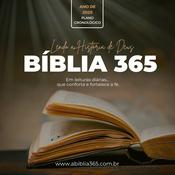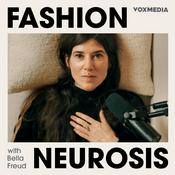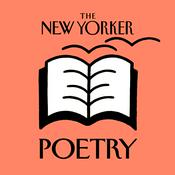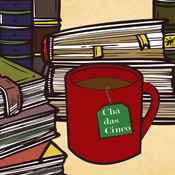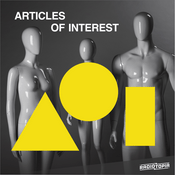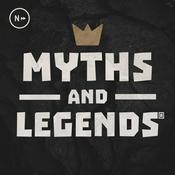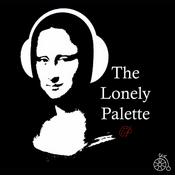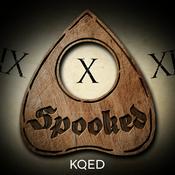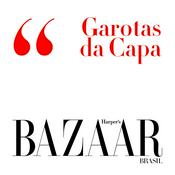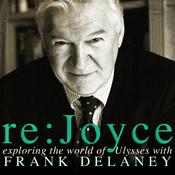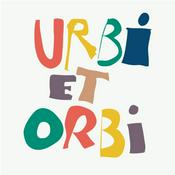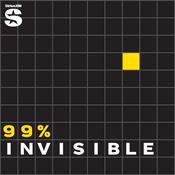46 episódios

Patrick Harding-Irmer
16/12/2025 | 20min
Here is Patrick Harding-Irmer proving that it is never too late to start dancing. He says, in this interview with Patricia Linton, founder and director of Voices of British Ballet, he only began to take dance classes at the age of 24 but was soon working in dance commercially. In 1972, inspired by a visit to Australia by Nederlands Dans Theater, he came to Europe, where he fell under the spell of the Martha Graham technique and the teaching of Robert Cohan at London Contemporary Dance Theatre (LCDT). After nine months performing with the X Group, he joined the main LCDT, going on the be voted Best Contemporary Dancer in Europe in 1985. This interview was recorded in Sydney, Australia, in 2006 and is introduced by Kenneth Olumuyiwa Tharp.Patrick Harding-Irmer was born in Munich in 1945, where his Australian mother had been working in dance and choreography. After World War Two, she and he returned to Australia. In 1964 he represented Australia in the World Surfing Championships, and then began to study arts at Sydney University. At the age of 24 he began to take dance classes and to dance commercially. In 1972, inspired by a performance by Nederlands Dans Theater on tour in Australia, he travelled to Europe and began studying at London Contemporary Dance School, specialising in Martha Graham technique. That same year he joined the X Group of the London Contemporary Dance Theatre (LCDT), which included five dancers who toured the UK and abroad, demonstrating and teaching Graham technique. In 1973, after nine months with the X Group, Harding-Irmer joined the main company of LCDT. In 1985 he was voted Best Contemporary Dancer in Europe. He returned to Australia in 1990, and has subsequently taught, and also worked with Australian Dance Artists, a group of mature performers dancing their own creations in different settings. Hosted on Acast. See acast.com/privacy for more information.

Marcia Haydée
09/12/2025 | 17min
In April 2017, Marcia Haydée was in Stuttgart for a week to celebrate her 80th birthday. Patricia Linton, founder and director of Voices of British Ballet, knew this was her only opportunity to see Haydée in Europe, so she telephoned Stuttgart Ballet to see if she could interview her. Patricia takes up the story in her own words: “They listened to my request, and, in perfect English, said they would ask Miss Haydée. With a full schedule of rehearsals all week, Marcia said she was free on Thursday from 3.30pm to 4.30pm. She didn’t know me at all, but it was enough for her to know how much I loved Kenneth MacMillan’s ballet, Song of the Earth. So, I jumped on a plane…This is the extraordinary Marcia Haydée…”In the interview Haydée explains how she was aware of both John Cranko and Kenneth MacMillan as a student at the Sadler’s Wells (now Royal) Ballet School, without suspecting her later close involvement with both men. In working with them, Cranko came to appreciate her melding of a Russian and a British approach to dancing; MacMillan was demanding and uncompromising, but she always strove to fulfil his requirements. She speaks revealingly about working in Stuttgart with Cranko on Onegin and with MacMillan on Song of the Earth and suggests that in those days and in those works, dancers took things at a speed and with risks that today’s dancers, for all their qualities, do not attempt to emulate. The interview is introduced by Dame Monica Mason.Marcia Haydée is a Brazilian-born ballerina, choreographer and company director. She was born in Rio de Janeiro in 1937, and after studying in Brazil, came to the Sadler’s Wells (now Royal) Ballet School in London in 1954, joining the Grand Ballet du Marquis de Cuevas in Monaco in 1957. Haydée joined the Stuttgart Ballet in 1961 and was named prima ballerina the following year by the company’s director and choreographer, John Cranko. Their relationship – her dancing, his choreography – was to become the foundation of Stuttgart Ballet’s international reputation in works such as Onegin, Romeo and Juliet and The Taming of the Shrew, among many others. She also worked closely withKenneth MacMillan on works such as Las Hermanas, Miss Julie and, above all, his Song of the Earth and Requiem. In 1976, she became director of the Stuttgart Ballet, a position she held until 1996. During her dancing career she performed as a guest artist for notable ballet companies throughout the world. From 1992 until 1996 Haydée directed the Ballet de Santiago de Chile, and again from 2003 until 2004. Since retiring from performing she has pursued a career as a choreographer, teacher and coach, and she also stages many ballets.The episode photograph shows John Cranko in rehearsal with Marcia Haydée and Bernd Berg, 1962. Photo: Hannes Kilian, courtesy Stuttgart Ballet Hosted on Acast. See acast.com/privacy for more information.

Deborah Macmillan
02/12/2025 | 23min
Deborah MacMillan, who talks to former Royal Ballet principal Bruce Sansom, is not afraid to speak her mind. Here she variously both endorses and explodes myths. Apart from anything else, these ten minutes should give hope to anyone who suffers from depression – nothing is impossible. Through the gloom of life, both within and without, her husband, the choreographer Kenneth MacMillan, went on creating ballets that have given thousands of dancers around the world endless challenges and insights, let alone audiences. For all his breaking of moulds and pushing at frontiers, MacMillan’s absolute belief in the traditions of classical ballet is never far away. As well as being a choreographer, MacMillan was also director of The Royal Ballet from 1970 until 1977.The interview is introduced by Jennifer Jackson.Deborah MacMillan is the custodian of the ballets choreographed by her late husband, Sir Kenneth MacMillan, supervising productions of his works all over the world. Deborah Williams, as she then was, was born in Queensland, Australia, in 1944, and educated in Sydney. She studied paining and sculpture at the National Art School before moving to London in 1970, marrying Kenneth in 1974. She has designed ballets for both stage and television, as well as making numerous contributions to Royal Ballet productions, including the production realisation for the major revival of Anastasia in 1996, production and setting for a condensed version of Isadora in 2009 and costume designer for a revival of Triad in 2001. In 1984, Deborah returned to painting full-time and her work is represented in private collections both in the UK and the USA.From 1993 until 1996, Deborah was a member of the Royal Opera House Board, and in 1996 was chair of The Friends of Covent Garden. She has served as a member of the Arts Council of England from 1996 until 1998, when she chaired the dance panel. She has also been a trustee of American Ballet Theatre and a member of the National Committee of Houston Ballet. She became Lady MacMillan when her husband was knighted for his services to dance in 1983 Hosted on Acast. See acast.com/privacy for more information.

Romayne Grigorova
25/11/2025 | 17min
Romayne Grigorova has had a long, distinguished career in ballet and the theatre. Here, in conversation with Patricia Linton, founder and director of Voices of British Ballet, she focuses on her early years, much of which was coloured by World War Two. In 1943, after training at the Sadler’s Wells Ballet School, she worked with the Sadler’s Wells Opera on The Bartered Bride in London during the Blitz and on tour. In 1945 she travelled to Germany with the opera under the auspices of ENSA. She then joined Ballet Rambert, and went to Germany again, to Berlin, where she delivered food parcels to a German singer and her family in the Russian zone, and scissors to Lotte Reiniger, a famous German film director and pioneer of silhouette animation. Romayne Grigorova also speaks of her dealings with Marie Rambert and Andrée Howard, joining Sadler’s Wells Theatre Ballet in 1951 and touring to North America.The interview was recorded in 2003, and is introduced by Monica Mason who spoke to Natalie Steed before Romayne's death in July 2025.Romayne Grigorova was born in Sandwich, Kent, in 1927. She studied under Vera Volkova, Ninette de Valois, George Goncharov and Ailne Philips. Her first appearance on the professional stage was in 1942. In 1943, after training at the Sadler’s Wells Ballet School for a further year, she danced in ballets with the Sadler’s Wells Opera in this country and, in 1945, on tour in Germany under ENSA. She joined Ballet Rambert in 1946 and then danced with the Anglo-Polish and Metropolitan Ballets until 1947, when the latter folded.Grigorova then worked in the commercial theatre until 1951, including performing in three pantomimes, before joining Sadler’s Wells Theatre Ballet, where she remained until 1955. She was ballet mistress for the stage musical Can-Can in 1955, and for the St Gallen Ballet in 1956. In 1957 she became ballet mistress for the Opera Ballet at the Royal Opera House, for whom she choreographed many ballets. She retired from this post in 1992 but continued to teach on a freelance basis. She performed small character roles with The Royal Ballet at Covent Garden, many of which had been created for her, such as Lady Montague in Kenneth MacMillan’s Romeo and Juliet and The Housekeeper in Peter Wright’s The Nutcracker. Romayne Grigorova was appointed an MBE for her services to dance in 2017. She died in July 2025.Photo by Donald Southern courtesy of The Royal Ballet Hosted on Acast. See acast.com/privacy for more information.

Cassa Pancho
18/11/2025 | 22min
When Cassa Pancho decided to interview Black female ballet dancers in the UK for her degree dissertation in 1999, she could not find any. So she seized the moment, setting out on the path that was to lead, in 2001, to the company known as Ballet Black and its associated schools. Here, the indomitable Cassa talks to Patricia Linton, founder and director of Voices of British Ballet, about the early days of her career, her expectations for the company and the schools, the misunderstandings she has had to overcome and, above all, her insistence that at all levels the now highly acclaimed Ballet Black is a balletic enterprise, with all that entails in terms of standards. The interview, was recorded in 2010 and is introduced by Kenneth Olumuyiwa Tharp.Cassa Pancho was born in London in 1978, to Trinidadian and British parents. Her original ambition was to become a ballerina. She trained at the Royal Academy of Dance and in 1999 gained her degree from Durham University.In 2001, at the age of 21, she founded Ballet Black in order to promote diversity in ballet and to increase the number of Black and Asian dancers in mainstream ballet companies.She has built a distinct and unique repertoire for her company from a wide range of distinguished choreographers. Ballet Black tours extensively, both in the UK and abroad, with regular London seasons at venues such as the Barbican Theatre and the Linbury Theatre of the Royal Ballet and Opera. Cassa realised from the start the importance of building for the future, and in 2002 set up the Ballet Black Junior School in Shepherd’s Bush, as well as an associate programme for younger pupils. She oversees the programme for young dancers, and teaches regularly herself.In 2009 Cassa Pancho graduated from the National Theatre Leadership programme. Also in 2009 Ballet Black won the Critics’ Circle National Dance Award for Outstanding Company, and the award for the Best Independent Company in 2012. She was appointed an MBE in 2013 for services to the Arts and was given the Freedom of the City of London in 2018. She is a Patron of Central School of Ballet and a Vice President of the London Ballet Circle.Photo: Ballet Black rehearsals Cassa Pancho [Artistic Director]; at the Fonteyn Studio, Royal Opera House, London, UK; 19 November 2006; Credit: Bill Cooper / ArenaPAL Hosted on Acast. See acast.com/privacy for more information.
Mais podcasts de Arte
Podcasts em tendência em Arte
Sobre Voices of British Ballet
Ouça Voices of British Ballet, Ler Antes de Morrer e muitos outros podcasts de todo o mundo com o aplicativo o radio.net
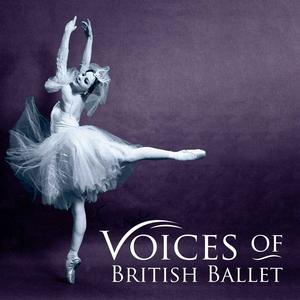
Obtenha o aplicativo gratuito radio.net
- Guardar rádios e podcasts favoritos
- Transmissão via Wi-Fi ou Bluetooth
- Carplay & Android Audo compatìvel
- E ainda mais funções
Obtenha o aplicativo gratuito radio.net
- Guardar rádios e podcasts favoritos
- Transmissão via Wi-Fi ou Bluetooth
- Carplay & Android Audo compatìvel
- E ainda mais funções


Voices of British Ballet
baixe o aplicativo,
ouça.



